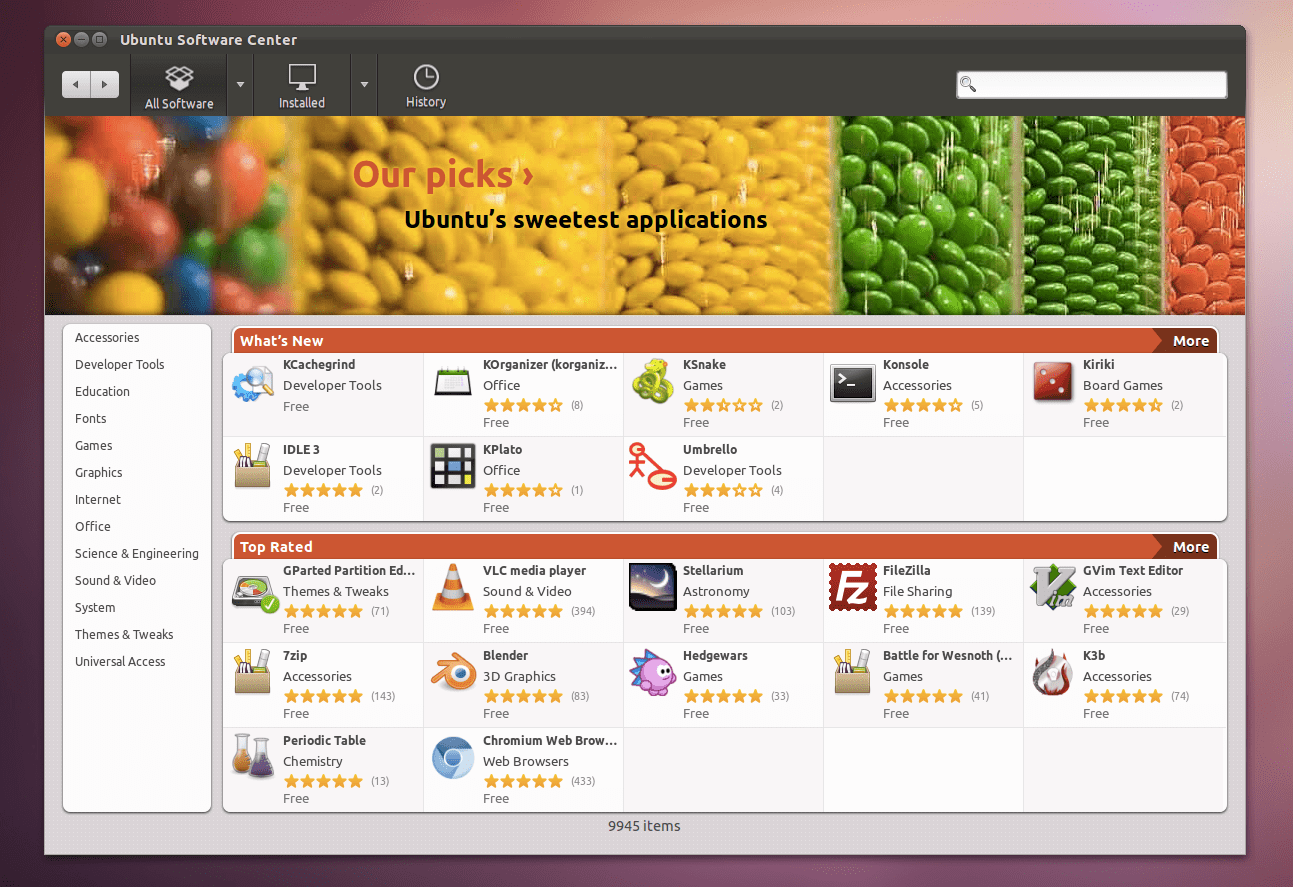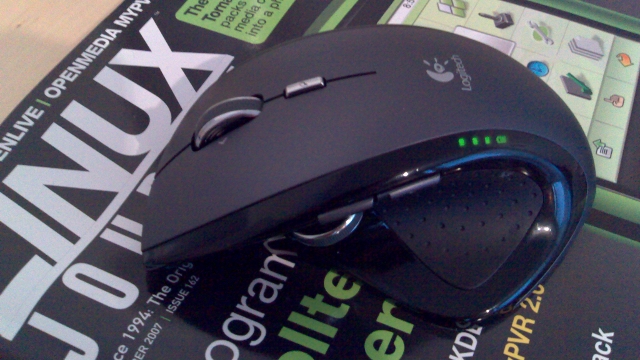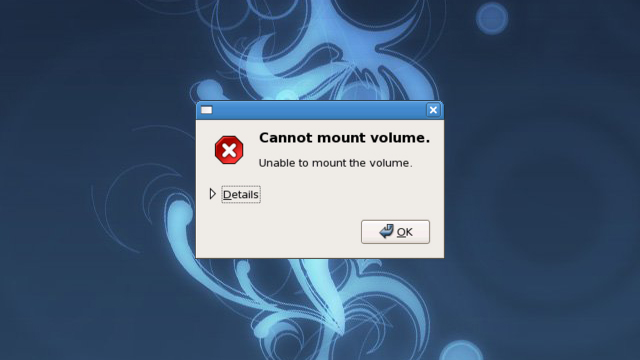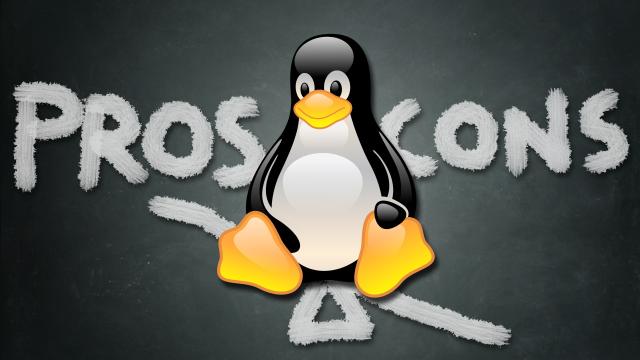Dear Lifehacker, I’ve read your complete guide to getting started with Linux, but I’m still a little nervous. You talk a lot about the advantages of Linux, but what about the disadvantages? I’m worried about not having the right apps or having to constantly fix things that are breaking. Am I worrying for nothing, or are there real concerns? Sincerely, Linux Learner
Title image remixed from Larry Ewing.
Dear Learner,
Just like any operating system, Linux has its pros and cons. You’ve heard the pros before: It’s free, it’s super-customisable, and it helps you learn a lot more about how your computer works. There are also a lot of distros, which means you can find the perfect one for you. While some have become a lot easier to use in the past few years, none are foolproof.
I used Linux as my primary OS on and off for a year or so. Here are some of the things I found (and why I eventually switched back to Windows).
Linux Has Some Great Apps, but It’s Missing Quite a Few

Linux’s app situation is interesting. If you’re worried about not having a good image editing program, photo library or music player, you might be surprised — Linux has some great offerings. Apps like digiKam compete with professional-level apps on other operating systems, and you have a lot of choices in some categories.
However, if you use services like Evernote, Wunderlist or Spotify, you’re going to have a little more trouble. Wunderlist and Spotify do have Linux versions available, but they’re often a step or two behind their Windows and Mac bretheren. Evernote has no official Linux client, and the third-party client Everpad isn’t very good. If you can rely on web apps for most of your services, or you’re willing to switch to a Linux-native app, you’ll be golden — but if you really like how Evernote works, you’re going to be really frustrated and disappointed with Linux’s offerings.
Linux Can Take a Lot of Initial Setup, Especially for Certain Hardware

Installing Linux is pretty easy these days, but getting everything “set up” the way you like it can take a little more work, depending on your hardware, your distro and your preferences. For example, I have a five-button mouse, but only the left-click and right-click buttons work out of the box by default. For the rest, I have to install a command line program, edit a config file to map the buttons to a function that I want and set that program to run on startup — and all that takes a little trial and error to get working properly. On Windows, it comes with software that helps me do all this in a few minutes. I’ve experienced similar things with video drivers, laptop touchpads, secondary hard drives and other specialised needs that don’t work out of the box.
Again, a lot of this depends on your hardware and preferences — some people may be good to go on day one, but others may spend a week just getting things working the way they want them. And the pickier you are the more trouble you’re going to have. Linux may have more customisation options than other operating systems, but they aren’t always easy.
Linux Is Less Polished Than More Professional, Established Operating Systems

Even the most well put-together distros have some bugs and annoyances, and in my experience, they were far more numerous than Windows or OS X. Some are fixable by the user, but will add up to even more time just “getting things working”. Heck, in my 30 days of using Linux Mint earlier this year, I experienced these known and documented annoyances:
- Mouse sensitivity was way too fast, even at its lowest setting
- The keyboard shortcut configuration window was broken
- I kept getting an “Unable to Mount Floppy Disk” error, when there was no floppy drive in my machine
- The sound output setting reset itself every time I rebooted, a bug that has existed since 2011
- The screen dims itself even when playing a video
Again, some of these are fixable, and some are bugs that may have already gotten fixed down the line — but for a distro that is supposed to be polished and beginner-friendly, it certainly caused a lot of headaches for me.
None of this is to say Linux is bad or that you shouldn’t try it. As we’ve said many times, Linux has a lot of advantages — you may just need to put in a little extra work to get things up and running properly. Which apps, bugs and frustrations you run into depend completely on your specific setup, and some may be much better off than others. But after a year or so of Linux use and multiple distros, this has been my experience.
In the end, Linux is great for a lot of things, even if you don’t use it as your main OS. It’s perfect for setting up a home theatre PC without buying Windows, or reviving a super old machine. But if you want to really dig deeply and use it as your main operating system, just know that things are going to be a little different than Windows or OS X. For some, it’s well worth the effort, but others may find that it’s too much work for little payoff. The only way you can know is to try it out for yourself.
Cheers
Lifehacker
Got your own question you want to put to Lifehacker? Send it using our [contact text=”contact form”].

Comments
9 responses to “Ask LH: How Hard Is It To Switch To Linux?”
My home computer is a few years out of date now, but it runs better on Ubuntu than it ever did on Windows when it was brand new. I use Linux full time now and I can’t imagine having to go back.
In terms of applications, I haven’t really had to give up on anything. LibreOffice is a great (free) alternative to Microsoft office, the standard media player is good, and, unlike Windows, google chrome works very well on Linux. Wunderlist is also available as a chrome packaged app that runs like a native app.
‘a few years out of date’ is the best time to install linux, as the hardware support tends to be rock-solid by then. Grab that old computer, install a fairly mainstream distribution, and you may be surprised just how easy it is.
Five years ago I used to have a regular list of issues to work around whenever I upgraded my distro (configure the soundcard settings to default to 5.1, make pulseaudio work properly, get ndiswrapper or some kernel modules running properly to support wireless, set up fstab so my fat and ntfs partitions mounted at boot, etc).
My most recent installs (lmde/debian testing) have had exactly two configuration issues:
-The nvidia x configuration didn’t seem to remember which screen was default on reboot in a multi-screen setup
-One media centre pc needed additional configuration when outputting unusual widescreen resolutions (1024×768 to 16:9) over HDMI.
in the 90’s using linux was for hardcore enthusiasts. Around 2005, it was still a bit of an adventure. Today, on generic hardware, it’s as easy to use as anything else. If you’re looking for a way to avoid the XPocalypse without throwing away your old computer, this could be it.
You should write for Gizmodo
Linux is for Linux users like me. If your not like me don’t use Linux. Less work for forum members to do looking after Noobs. When Linux is ready for the masses we will let you know.
As an enthusiast I like to encourage people to try the things I love (technology, motorbikes and 4×4’ing!)
I understand that Without going to the masses the things I love will never have a sustainable and productive future.
So please get off your elitist high horse and start encouraging people to share the experience you enjoy now, just remember you were a Noob once too!
Such a terrible attitude to have instead of helping bring people into the fold you tell them to stay away.
Some people are happy to help Noobs out, I guess your not one of them.
Troll harder
I’d encourage people thinking of making the move to install VirtualBox (http://virtualbox.org) on their Windows PC, and install Linux inside. Get a feel for it, see what you need to install or find, and then make a decision.
For some things, there are better solutions in Linux than Windows, but it’s not always the case. That said, it is much more customisable if that’s your thing.
Keep in mind that as much as some power users love Linux, it’s not for everyone…
As per the article, it really depends on your usage.
For the majority of people who just use a computer for Web Browsing, Email and basic Office Document reading and writing, it’s quite straight forward.
The above describes my usage pattern and I haven’t looked back for the past 3 years.
Installing Linux may be easy in many instances, but switching to Linux is very hard – even for someone who is tech savvy. Setting up Ubuntu Linux took me quite a while to get it just how I wanted. Simple things like auto-mounting partitions and setting up a firewall can be difficult.
I made a guide so others can learn how to get around the common issues and pitfalls – http://www.lukescott.me/ubuntu/